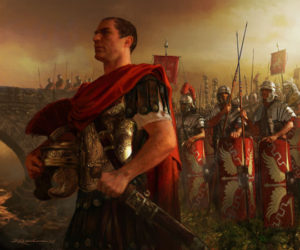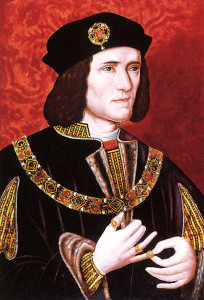 Nowadays, fake news, alternative news (#altnews),and alternative facts are hot topics. Both sides of the political spectrum accuse the other of engaging in the practice while doing the same themselves. They both claim they want objective news. But does such an animal exist? Did it ever exist? The answer to both questions is “No.” MSNBC, Fox, CNN and such stations all have a slant, a perspective. Even ones like ABC, NBC and CBS do as well. Whether it be an obvious bias by reporters or commentators (as is evident in some) or even merely by what they choose to report, what questions they ask and how much time they spend on certain issues, news sources are biased. That’s true of newspapers, radio and online reporting as well. While I am not truly objective (Who is?), I can see that even for sources with whom I agree, they have a bias. But while I may not be objective, I am logical. There is an old saying that there is nothing new under the sun. Fake news, alternative news,and alternative facts have been that way all through recorded history.
Nowadays, fake news, alternative news (#altnews),and alternative facts are hot topics. Both sides of the political spectrum accuse the other of engaging in the practice while doing the same themselves. They both claim they want objective news. But does such an animal exist? Did it ever exist? The answer to both questions is “No.” MSNBC, Fox, CNN and such stations all have a slant, a perspective. Even ones like ABC, NBC and CBS do as well. Whether it be an obvious bias by reporters or commentators (as is evident in some) or even merely by what they choose to report, what questions they ask and how much time they spend on certain issues, news sources are biased. That’s true of newspapers, radio and online reporting as well. While I am not truly objective (Who is?), I can see that even for sources with whom I agree, they have a bias. But while I may not be objective, I am logical. There is an old saying that there is nothing new under the sun. Fake news, alternative news,and alternative facts have been that way all through recorded history.

Ramses II and the battle of Kadesh
We think of history as a study of facts. That is not the case. It is the study of what has been recorded by people about events. And, as I said, no one is truly objective. The first account of a battle recorded was the Battle of Kadesh in modern-day Syria. Ramses II of Egypt led an expedition against King Muwatalli II of the Hittites and in 1274 B.C., they met in battle.According to the detailed account, Ramses foolishly stumbled into a trap laid by Muwatalli, misled by Hittite informants who were actually spies. He divided his forces and the army he led was attacked by a much larger Hittite force with 2,500 chariots. According to the detailed account, Ramses bravely rallied his forces and drove the Hittites from the field, soundly defeating them. Sounds factual, doesn’t it? However, this account was written by the Egyptians after the battle. The hieroglyphic account shows Ramses in his chariot, firing arrows at the foe. There is a saying that history is written by the victors, but it can also be written by those who want to be remembered as the victors. There is a Hittite account, not nearly so detailed, that claims a Hittite victory. Most historians, after a study of the account and the aftermath of the battle, think it was a draw, that neither side had a clear-cut victory. (click here for full account) Since the Hittites continued to occupy Kadesh after the battle, they may have won. But, unless someone invents a working time machine, we can only guess. Such is the case with much of history and, unfortunately, news.

Julius Caesar, the conqueror
The next example is Julius Caesar’s Gallic War Commentaries. It is the best account of the Roman conquest of Gaul, yet how much can we trust? Caesar wrote them in the third person, no doubt to make them sound less subjective. After all, they are the tale of Caesar’s conquest of Gaul and were a prime propaganda piece for his struggle to become the top dog in Rome. Caesar did conquer Gaul. We know that because it became a Roman province. Did he exaggerate the armies he beat? Very likely. Since there was no way he could have counted the quarter of a million Celts in the relief army trying to help the besieged Gallic chief Vercingetorix and his supposedly eighty thousand men, no historian believes the numbers. Although the Roman army was the elite force of their day, Caesar had maybe forty thousand men and that made it eight-to-one odds against him, at best. (click here for full account) It simply made good press back home to add a few tens of thousands to the enemy forces they conquered. While it is a history of that conquest, it was also meant to justify Caesar’s seizing territory that was not Rome’s. One of the key points in Roman expansion had been that it justified doing so because of being attacked. In Caesar’s case, no one was attacking him. However, if an ally in Gaul was attacked, he would rush to their aid. Then he would stay. Slowly but surely, Caesar expanded Roman territory to the Rhine and even made a foray into Britain, all without authorization from Rome. His enemies in Rome cried foul, but he sent back a fortune in spoils of war as well as establishing more income from the Republic in taxes and tributes from the newly-conquered Celtic tribes, along with his embellished battle accounts to bolster his standing. Along the way, he made a sizable fortune for himself from his share of the spoils. He entered Gaul an impoverished patrician and left a very wealthy, popular general. Within a couple of years, he was appointed dictator of the Republic for life.

Recorders of history often used their accounts to promote their views, twisting facts to fit them. There were no newspapers in the ancient world, but when they were invented, they became another source of disinformation. There are many examples, but one stands out because it gave us a term used to describe such reporting: yellow journalism. When the armored cruiser USS Maine blew up on a “visit” to Havana Harbor on February 15, 1898, 261 of the 355 men on board died. America was stunned and wanted to know why. Now the ship was there to protect American interests in Cuba during an insurrection by Cuban rebels against Spain, who still owned it as a colony. Joseph Pulitzer’s New York World and William Randolph Hearst’s New York Journal started a campaign to blame Spain, claiming the explosion was due to a mine or a bomb and demanding an American response. While a Spanish investigation saw evidence of an internal explosion in the coal bunker, an American investigation by rather amateur investigators concluded it was caused by a mine.America made demands on Spain, finally demanding it surrender control of Cuba to America. Spain responded by declaring war on America, a major mistake.? The role of the two newspapers in forging popular opinion and political pressure cannot be ignored. They incited the public, who adopted the slogan, “Remember the Maine!? To hell with Spain!” The term “yellow journalism” came from the New York World and the New York Journal, because of a cartoon character that first appeared in the World and then in both papers, the Yellow Kid.  Although originally a secondary character in a black and white cartoon drawn by Richard F. Outcault, the Kid gained fame when he started appearing in a yellow nightshirt in the newly colored Sunday paper. The two papers that carried him were soon known as the Yellow Papers and their policy of sensational headlines, wild exaggerations and inflammatory accusations became known as “yellow journalism.” (click here for more) As a side note, later evaluations of the evidence concluded that the explosion was most likely a result of volatile firedamp released from the bituminous coal used as fuel. (click here for full report) So much for truth in journalism.
Although originally a secondary character in a black and white cartoon drawn by Richard F. Outcault, the Kid gained fame when he started appearing in a yellow nightshirt in the newly colored Sunday paper. The two papers that carried him were soon known as the Yellow Papers and their policy of sensational headlines, wild exaggerations and inflammatory accusations became known as “yellow journalism.” (click here for more) As a side note, later evaluations of the evidence concluded that the explosion was most likely a result of volatile firedamp released from the bituminous coal used as fuel. (click here for full report) So much for truth in journalism.
When I was teaching American history to a middle school class in the late 1980’s, I broke the class into thirds and assigned each group the job of making a TV news story about the sinking of the USS Maine. One group did it as a Spanish station, one as an American station and one as a Cuban station. They then acted out their news coverage. The Spanish one did it as a tragic accident, but emphasized that the Spanish government had nothing to do with it. The Cuban station blamed the Spanish and the American group really got into the assignment. They had an anchor desk doing the main story then kept breaking to “live” interviews. Some students even portrayed survivors with bandages and fake blood. All of them told the story with a mine causing the explosion and that the Spanish must have done it. While we did not settle the true cause of the explosion with the assignment, the kids got the idea: “news” is not so much about truth and facts as it is about flash and innuendo.

“Sedona, Arizona?s ‘sacred’ McDonald?s brings energy to the town?s spiritual vortex.”?? Picture from the Nevada County Scooper.
It is interesting to note that fiction also plays a part in false news or false history. In this day of Facebook, tweets and questionable websites, it is becoming all the rage. It can make such an impression that it becomes accepted fact, especially when it gets in mainstream media. A woman was quoted in a newspaper saying that “psychic healer Edgar Cayce pointed to Nevada City (CA) as the first ‘City of Light’ in the world.” The woman got that from an article in the spoof news-site, Nevada County Scooper. (Click here for a laugh.) Considering that the site’s article said Nevada City was competing with ‘sacred’ McDonald’s in Sedona, AZ for being Cayce’s “spiritual vortex of the known universe,” she should have been suspicious. However, now this joke has become archived online as a fact, or at least claimed as one, in a regular newspaper.

Richard III
But sometimes the fiction has a more political purpose. Consider the play by William Shakespeare, Richard III. The book, Holinshed’s Chronicles of England, Scotland, and Ireland, that was first published in 1577 is widely accepted as Shakespeare’s historical source for many of his plays. (click here) The three witches in Macbeth first appear there and that can be no coincidence. However, like the witches who morphed from Holinshed’s nymphs to Shakespeare’s hags, the history was not slavishly followed. Even a cursory reading of Shakespeare’s play reveal a conniving, manipulative, unscrupulous and murderous character. He is even more evil than Holinshed’s version. Although he may well have eliminated his nephews Edward V and Richard (definitely not a nice thing to do), he did not kill the Earl of Warwick and Edward of Westminster in order to marry Anne Neville, as he says in the play, and all indications are that he was upset when his brother, King Edward IV, executed their brother, the Duke of Clarence, rather than plotted it. The man Shakespeare described as a hunchbacked “bottled spider” did suffer from severe scoliosis, but was still a noted warrior who died in battle trying to physically come to grips with Henry Tudor, the future Henry VII.? His acts while king were noted for their concern for his kingdom, not personal gain. So why did Shakespeare make Richard III the epitome of evil in his play? Consider when he wrote the play, 1597. Elizabeth I was queen, the granddaughter of Henry VII, the man whose crown came from the head of the slain Richard III, the rightful king. The Tudors were not known to suffer any questioning of their right to the crown. It was a good way to secure a room in the Tower until execution. But praising them, making them seem glorious rulers was a way to royal favor. What would you do if you were Shakespeare? But the picture painted by the playwright is the one that has lasted through history. When the play is on stage, Richard usually has a hunchback and lurks in dark corners, monologuing his nasty plots. Fiction has created fact.
While I could go on about how society takes fiction as fact, that is another topic, one that will include conspiracy theories.? Next time.? But remember that in the TV show House, Dr. House’s favorite adage was, “Everybody lies.” I don’t say everybody does, but far too many do. Keep that in mind when you watch, hear or read the “news.”
